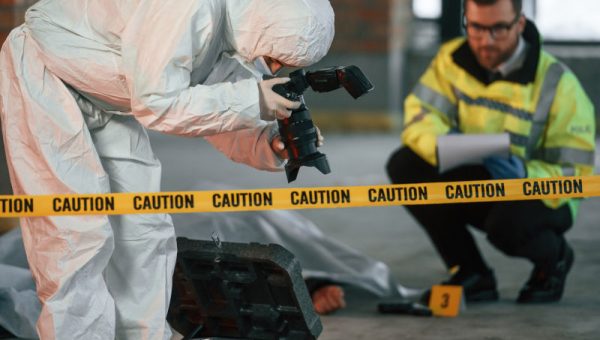Navigating the criminal justice system can often seem like a daunting and complex journey. In Queensland, understanding the stages of criminal procedure is vital for defendants, their families, and anyone involved in the legal process. This journey begins the moment an individual is arrested and continues through various critical phases until the final resolution of the case.
The criminal procedure encompasses a series of legal steps and processes, each with its significance and implications. For those facing charges, having a comprehensive grasp of these stages not only helps in preparing for what lies ahead but also in making informed decisions about their defence. It’s equally important for families and supporters of defendants to be aware of these stages, as it aids in providing the necessary support and understanding throughout the legal proceedings.
In Queensland, the criminal procedure is governed by a framework that ensures the legal rights of the accused are upheld while maintaining the integrity and fairness of the judicial process. Each step, from the initial arrest to the potential trial, is designed to adhere to principles of justice and legal fairness.
By delving into each stage of the criminal procedure, we aim to demystify the process and provide clarity on what defendants can expect. This understanding is crucial, as it not only helps in navigating the legal system but also reinforces the importance of expert legal representation at every step of the way.
In the following sections, we will explore each stage in detail, shedding light on the nuances and critical aspects of the criminal procedure in Queensland.
Arrest: The Beginning of the Criminal Procedure
The arrest marks the commencement of the criminal procedure in Queensland, a pivotal moment that sets in motion a series of legal steps. Understanding the arrest procedure, as well as the rights of the accused, is crucial for anyone who finds themselves in this situation.
When a person is arrested in Queensland, it is typically because the police believe they have sufficient evidence to charge them with a crime. The arrest can occur in various scenarios, such as immediately after an alleged offence is committed, following a police investigation, or if an arrest warrant has been issued.
During the arrest process, the rights of the accused must be upheld. These rights include:
1. The Right to Remain Silent: The accused has the right to remain silent and not answer any questions, except for providing personal details like their name and address. It’s important to note that anything said can potentially be used as evidence in court.
2. The Right to Legal Representation: One of the most critical rights is access to legal representation. The accused has the right to contact a lawyer and should be allowed to do so as soon as reasonably possible after the arrest.
3. The Right to a Fair Treatment: The treatment during arrest must be reasonable and humane. The accused should not be subjected to unnecessary force or intimidation.
An arrest can be a stressful and disorienting experience but understanding these fundamental rights can significantly impact the subsequent criminal procedure. It’s at this juncture that engaging with a knowledgeable criminal lawyer becomes invaluable. A lawyer can provide guidance, ensure that the rights of the accused are protected, and begin formulating a robust defence strategy.
As the first step in the intricate journey of the criminal justice system, an arrest not only signifies the seriousness of the situation but also underscores the necessity of understanding each subsequent stage of the criminal procedure. In the following sections, we will further explore these stages, outlining what defendants can anticipate as their case progresses through the Queensland legal system.
Initial Appearance
Following an arrest in Queensland, the accused is taken through a process that precedes their initial appearance in court. This stage is crucial as it officially records the arrest and sets the stage for the formal legal proceedings.
The process involves several key steps:
1. Recording Personal Information: The police record the personal details of the accused, including their name, address, date of birth, and photograph.
2. Fingerprinting: As part of the identification process, the police take fingerprints of the accused.
3. Cataloguing Belongings: Any personal belongings the accused had at the time of the arrest are catalogued and stored for safekeeping.
4. Documenting the Charges: The specific charges against the accused are officially recorded.
5. Bail Consideration: Depending on the nature of the charges, the police may consider whether to grant bail. If bail is not granted, the accused will be held in custody until their initial court appearance.
Initial Court Appearance and Its Significance
The initial court appearance, commonly known as the ‘first mention’, is a critical stage in the criminal procedure. This appearance serves several important purposes:
1. Legal Representation: The accused has the opportunity to be represented by their lawyer. If they do not have legal representation, the court may advise them to seek one, especially for serious charges.
2. Plea Indication: While not always required, the accused may be asked to indicate a plea of ‘guilty’ or ‘not guilty’. In some cases, the plea can be deferred to a later date.
3. Bail Application: If the accused has not been granted bail, a bail application can be made during the initial appearance. The court will consider various factors, such as the nature of the offence, the accused’s background, and community ties, before deciding on bail.
4. Scheduling Further Proceedings: Depending on the case’s complexity and the entered plea, further court dates are scheduled. These may include dates for committal hearings, trial, or sentencing.
The initial appearance is a pivotal moment in the criminal procedure as it marks the transition from the arrest into the formal court process. It is a moment where the strategic decisions made can significantly impact the direction and outcome of the case. Understanding the gravity of this stage and the importance of being well-prepared, ideally with competent legal representation, cannot be overstated.
In the subsequent sections, we will delve into the deeper intricacies of the Queensland criminal procedure, exploring each step as the case progresses through the judicial system.
Bail
One of the critical stages following an initial court appearance in the criminal procedure in Queensland is the consideration of bail. Bail decisions are pivotal, as they determine whether the accused will be detained or released while awaiting trial. Understanding bail, sureties, and release conditions is essential for defendants and their legal representatives.
Understanding Bail and Sureties
Bail is a legal mechanism that allows the accused to be released from custody until their court hearing, subject to certain conditions. It can involve a surety, which is a sum of money or property pledged as a guarantee that the accused will attend their court dates.
Conditions
Conditions under bail can vary based on the case’s specifics. Common conditions may include:
● Regular reporting to a police station.
● Restrictions on travel, such as surrendering passports.
● No contact orders concerning complainant or witnesses.
● Residency requirements, ensuring the accused remains at a specified address.
● Curfews and restrictions on attending certain places or activities.
Magistrates and Judges consider several factors when deciding whether to grant bail:
1. Nature and Severity of the Offence: Serious charges, particularly those involving violence, may reduce the likelihood of bail being granted.
2. Previous Criminal Record: A history of criminal activity, especially if it includes failing to comply with previous bail conditions, can influence the decision.
3. Risk of Reoffending: If there is a perceived risk that the accused may commit further offences while on bail, it may be denied.
4. Flight Risk: If there is evidence suggesting that the accused might flee to avoid trial, bail may not be granted.
5. Community Ties: Strong connections to the community, such as stable employment and family, can positively influence the decision.
6. Likelihood of Interfering with Witnesses or Evidence: Concerns about the accused tampering with evidence or intimidating witnesses can result in bail denial.
Bail decisions are crucial in the criminal procedure, as they significantly affect the accused’s ability to prepare for trial and maintain normalcy in their lives. An experienced criminal lawyer can be invaluable in presenting a compelling case for bail, ensuring that all relevant factors are considered to secure the best possible outcome for their client.
In the next sections, we will explore further stages in the criminal procedure, each bringing unique challenges and considerations in the pursuit of justice in Queensland’s legal system.
Committal Hearing and Its Importance
In the stages of criminal procedure involving indictable charges in Queensland, the committal hearing plays a crucial role. This stage is integral in determining the course of the case and whether it will proceed to a higher court.
The Role of Committal Hearings
A committal hearing is conducted in the Magistrates Court and serves several key purposes:
1. Evaluating Evidence: The primary function of a preliminary hearing is to assess the evidence against the accused. The prosecution presents its case, including witness statements and physical evidence, to establish a prima facie case — that is, sufficient evidence to justify the matter being ‘committed’ to the higher court.
2. Testing the Prosecution’s Case: It provides an opportunity for the defence to cross-examine witnesses and challenge the evidence presented by the prosecution. This can be a strategic tool in uncovering weaknesses or inconsistencies in the prosecution’s case.
3. Determining the Path Forward: Based on the evidence and arguments presented, the magistrate decides whether there is enough evidence to commit the case to a higher court, such as the District or Supreme Court. If the evidence is deemed insufficient, the charges may be dismissed at this stage.
Importance of Committal Hearings
The importance of a committal hearing in the criminal procedure cannot be overstated:
● Early Insight into the Prosecution’s Case: It offers the defence an early look at the prosecution’s evidence, which is invaluable for preparing a defence strategy for a potential trial.
● Opportunity for Case Dismissal: In instances where the prosecution’s evidence is weak, the defence can argue for the case’s dismissal, potentially avoiding the need for a full trial.
● Influencing Plea Decisions: The insights gained during a preliminary hearing can influence the accused’s decision on whether to plead guilty or proceed to trial. A strong prosecution case may lead to plea negotiations, while a weak case might encourage taking the matter to trial.
● Protecting the Accused’s Rights: This hearing ensures that individuals are not subjected to the stress and expense of a trial without sufficient cause. It acts as a safeguard against unfounded charges proceeding through the judicial system.
In summary, the committal hearing is a pivotal stage in indictable cases in Queensland’s criminal procedure. It plays a critical role in assessing the prosecution’s case, protecting the rights of the accused, and shaping the course of the legal proceedings. The outcome of this hearing significantly influences the strategy and decisions of the defence as the case progresses.
Arraignment and Entering a Plea
Following the committal hearing criminal procedure in Queensland, the arraignment marks a significant phase where the accused formally responds to the charges. This stage is critical as it sets the tone for the remainder of the legal process.
The Process of Arraignment and Its Purpose
In the District and Supreme Court, the primary purposes of arraignment are:
1. Official Presentation of Charges: The specific charges against the accused are formally read out in court.
2. Entering a Plea: The accused is asked to enter a plea in response to the charges – guilty or not guilty.
Different Types of Pleas and Their Implications
The plea entered during arraignment has significant implications for the direction of the case:
● Guilty Plea: An admission of guilt that often leads to the sentencing process, potentially with considerations for a reduced sentence.
● Not Guilty Plea: Indicates the accused’s intent to contest the charges, leading to a trial where the prosecution must prove guilt beyond a reasonable doubt.
The choice of plea is a strategic decision, often influenced by the strength of the evidence, legal advice, and personal considerations of the accused.
Pretrial Legal Arguments
Pretrial legal arguments are a series of legal ‘requests’ made to the court before the trial commences. These motions play a pivotal role in shaping the trial proceedings:
Common Types of Pretrial Arguments
1. Application for Change of Venue: Seeking to move the trial to a different location, usually due to concerns about impartiality or pretrial publicity.
2. Application to Exclude Evidence: Arguing that certain evidence should be excluded from the trial, often due to illegal search and seizure or violations of the defendant’s rights.
Their Impact on the Trial Proceedings
The decisions on these pretrial legal arguments can significantly influence the course of the trial. For instance:
● A successful application to dismiss can lead to the end of the case or a reduction in charges.
● An application to exclude may eliminate key evidence from the prosecution’s case, affecting their ability to prove guilt.
● A change of venue can impact the demographic makeup of the jury and the general public’s perception of the case.
Pretrial legal arguments collectively ensure that the trial proceedings are conducted on an equal and fair basis, respecting the legal rights of the accused, and upholding the integrity of the judicial process. These stages are instrumental in laying the groundwork for an informed and balanced trial in Queensland’s criminal justice system.
Negotiations: An Alternative to Trial
Negotiations occupy a significant role in the criminal justice system in Queensland, offering an alternative to going to trial. This process involves negotiations between the defence and the prosecution and can significantly alter the course of a criminal case.
Understanding Negotiations
Negotiations are a legal practice where the defence and prosecution negotiate the nature of the charges or the facts of the charges. Examples include:
1. Reduction in Charges: The prosecution may agree to reduce the severity of the charges, thereby potentially lowering the penalties.
2. Dismissal of Other Charges: In cases with multiple charges, some may be dismissed in return for a guilty plea on the rest.
How Charges are Negotiated and Agreed Upon
The process of negotiating a plea deal involves several steps:
1. Initiation of Discussions: Either party can initiate negotiations, often occurring after the evidence has been disclosed and reviewed.
2. Negotiation Process: The defence and prosecution discuss potential resolutions to the matter.
Negotiations can provide benefits to both the defendant and the judicial system, such as reduced legal costs, quicker resolution of cases, and decreased court caseloads. However, it requires careful consideration of the legal and personal implications for the defendant.
Jury Selection and Its Process
In Queensland’s criminal justice system, the right to a trial by jury is a fundamental aspect, particularly in serious criminal cases. The process of selecting a jury is critical, as it ensures that the accused is tried fairly by a panel of impartial peers.
The Constitutional Right to a Jury Trial
Under the Australian Constitution, defendants in serious criminal matters are afforded the right to a trial by jury. This right is foundational to the legal system, ensuring that justice is not only administered by legal professionals but also weighed by members of the community.
Description of the Jury Selection Process
The jury selection process involves several steps:
1. Summoning Potential Jurors: A pool of potential jurors is summoned from the electoral roll. These individuals are randomly selected.
2. Jury Pool Assembly: Potential jurors assemble in the courtroom.
3. Challenges and Excusals: Both the defence and prosecution have a limited number of peremptory challenges, allowing them to reject certain jurors without stating a reason. Additionally, jurors can be excused for cause, such as conflicts of interest or preconceived notions about the case.
4. Final Selection: The jury is finalised once 12 (or more, depending on the jurisdiction and case complexity) jurors are selected who have not been challenged or excused.
The Trial: Presentation of Evidence and Witnesses
In the criminal justice system of Queensland, the trial stage is where the substantive examination of the charges against the accused takes place. It’s a critical phase where both the prosecution and defence present their cases, marked by the presentation of evidence and testimonies.
Overview of the Trial Process
The trial typically follows these steps:
1. Opening Address: The Prosecution provides their opening statement, outlining their respective position and what they intend to prove. The defence may or may not present an opening address.
2. Presentation of Evidence: The prosecution begins by presenting evidence, including witness testimonies, physical evidence, and expert reports, to try and prove the defendant’s guilt beyond reasonable doubt.
3. Cross-examination: After the prosecution presents each witness, the defence is allowed to cross-examine them, challenging their testimonies and the evidence presented.
4. Defense’s Case: Once the prosecution rests its case, the defence presents its evidence and witnesses, if they so choose.
5. Closing Arguments: Both sides make their closing arguments, summarising the evidence and making a final appeal to the jury.
Roles of Prosecution and Defense
● The Prosecution’s role is to prove the defendant’s guilt beyond a reasonable doubt. They must present a coherent narrative that links the evidence to the accused in a manner that satisfies the legal requirements for conviction.
● The Defense’s role is to challenge the prosecution’s case, create reasonable doubt, and defend the rights of the accused. This can involve presenting alternative explanations and highlighting inconsistencies.
Opening Statements and Closing Arguments
Purpose and Content of Opening and Closing Statements
● Opening Statements: These provide the jury with a roadmap of what each side intends to prove. The prosecution outlines the evidence they will present, while the defence can highlight the lack of evidence or alternative interpretations.
● Closing Arguments: These are critical in persuading the jury. The prosecution aims to solidify the guilt of the accused, and the defence focuses on casting doubt. It’s an opportunity to tie together all the evidence and testimonies presented during the trial.
Jury Deliberation and Verdict
The Jury’s Role in Deliberation and Reaching a Verdict
1. Deliberation Process: After closing arguments, the jury retires to deliberate privately. They review the evidence, discuss the facts, and apply the law as instructed by the judge.
2. Reaching a Verdict: The jury aims to reach a unanimous decision. They must decide whether the prosecution has met the burden of proving the defendant’s guilt beyond a reasonable doubt.
3. Verdict: The jury returns to the courtroom to announce the verdict. If the jury cannot reach a decision, it may result in a hung jury, potentially leading to a retrial.
The trial is the culmination of the criminal procedure in Queensland, where the justice system’s principles are actively put into practice. It’s a complex interplay of legal strategies, evidence presentation, and juridical deliberations, all converging to determine the accused’s fate.
Sentencing: Post-Conviction Procedures
In Queensland’s criminal justice system, sentencing is a critical phase where the court determines the appropriate penalty for the crime committed. Understanding the factors that influence sentencing decisions and the various types of sentences is crucial for both legal practitioners and those subject to the criminal justice process.
Factors Influencing Sentencing Decisions
Sentencing decisions are influenced by a range of factors, including:
1. Nature and Severity of the Crime: More serious offences typically result in harsher sentences.
2. Circumstances of the Offence: Factors like the use of violence, the impact on victims, and the offender’s intent play a significant role.
3. Offender’s Background: The court considers the offender’s criminal history, personal circumstances, and any mitigating factors like remorse or rehabilitation efforts.
4. Community Protection: The need to protect the community from further crimes is a significant consideration.
5. Deterrence: Sentences can be designed to deter both the individual offender and the wider community from committing similar offences.
6. Legal Precedents and Guidelines: Sentencing decisions are also guided by legal precedents and statutory guidelines to ensure consistency in the justice system.
Different Types of Sentences and Their Implications
Various sentencing options are available in Queensland, each with different implications:
1. Custodial Sentences: Involves imprisonment. The duration depends on the severity of the crime and other factors.
2. Suspended Sentences: The offender is sentenced to jail, but the execution of the sentence is suspended, provided they comply with certain conditions.
3. Community Correction Orders: These include community service, rehabilitation programs, or other activities aimed at rehabilitation.
4. Fines: Monetary penalties can be imposed either alone or in conjunction with other sentences.
5. Probation: Involves the release of the offender under supervision for a specified period, with conditions that must be adhered to.
Each sentencing option carries different implications for the offender, from immediate incarceration to opportunities for rehabilitation and restitution. The choice of sentence is a careful balance between the nature of the crime, the interests of society and the rehabilitation prospects of the offender.
Sentencing is a complex process that requires careful consideration of all relevant factors to ensure that justice is served in a manner that is fair, appropriate, and by the law.
Appeals: Challenging Convictions
In the Queensland criminal justice system, the appeals process provides an avenue for challenging convictions or sentences that are believed to be unjust or legally flawed. Understanding the process and grounds for filing an appeal is essential for those seeking to contest a court’s decision.
The Process and Grounds for Filing an Appeal
1. Filing an Appeal: To initiate an appeal, the convicted party (now the appellant) must file a notice of appeal. This must be done within a specific time frame after the conviction or sentencing.
2. Grounds for Appeal: Common grounds for appeal include:
● Legal errors made during the trial.
● The verdict being unreasonable or unsupported by evidence.
● Procedural errors or misconduct that affected the trial’s outcome.
● Excessive or inadequate sentencing.
3. Appeal Hearing: The appellate court reviews the trial’s records and listens to arguments from both sides. New evidence is typically not permitted, with the focus being on the trial’s legal aspects.
Possible Outcomes of an Appellate Process
The appellate court can deliver several outcomes:
● Upholding the Original Decision: The court may find no grounds to overturn the conviction or change the sentence.
● Reversal of Conviction: If significant legal errors are found, the conviction can be reversed.
● Modification of Sentence: The court may adjust the sentence if it’s deemed inappropriate.
● Ordering a Retrial: In some cases, the court may order a new trial if the original trial was fundamentally flawed.
Errors and Retrials
How Errors in the Trial Can Lead to Retrials or Reversals of Convictions
1. Identification of Errors: If it’s determined that significant legal or procedural errors occurred during the trial, this can be grounds for an appeal. Common errors include improper admission of evidence, incorrect jury instructions, or ineffective assistance of counsel.
2. Impact of Errors: The appellate court evaluates whether the errors were substantial enough to have impacted the trial’s outcome.
3. Retrials: If a conviction is overturned due to trial errors, the case may be remanded for a new trial. In a retrial, the entire case is presented again, allowing for the correction of the errors that led to the appeal.
4. Reversals: In some cases, errors may lead to the complete reversal of a conviction, particularly if the appellate court finds that no reasonable jury could have convicted based on the evidence presented.
The appeals process is a crucial aspect of the criminal justice system, ensuring that legal errors and injustices at the trial level can be rectified. It provides a mechanism for reviewing and, if necessary, correcting decisions to uphold the principles of fairness and justice in the legal system.
Key Takeaways
The journey through the criminal procedure in Queensland is complex and multifaceted, encompassing various stages that each play a vital role in the administration of justice. Here are the key takeaways from each stage, emphasising the crucial role of legal representation and the importance of understanding one’s rights:
1. Arrest: Marks the beginning of the criminal process. Key rights include being informed of the reason for arrest, the right to remain silent, and the right to legal representation.
2. Initial Appearance: The formal recording of the arrest and the first court appearance where charges are presented, and bail considerations are made.
3. Bail and Conditions: A critical decision-making point where factors like the nature of the offence, criminal history, and community ties are considered to determine the accused’s eligibility for release.
4. Committal Hearing: An opportunity for the defence to test the prosecution’s evidence and for the court to decide if the case should proceed to trial.
5. Arraignment and Entering a Plea: Involves the formal reading of charges and the defendant’s plea, which sets the course of the subsequent legal proceedings.
6. Pretrial Legal Arguments: Legal Arguments that can significantly shape the course of the matter.
7. Negotiations: An alternative to trial, where the accused may choose to plead guilty in exchange for certain concessions, highlighting the importance of strategic legal negotiation.
8. Jury Selection: A process ensuring the accused is tried by an impartial jury, reflecting the democratic principle of being judged by one’s peers.
9. The Trial: The presentation of evidence and witnesses, where the roles of prosecution and defence are pivotal in determining the case’s outcome.
10. Sentencing: Post-conviction procedures that consider various factors to determine appropriate punishment.
11. Appeals: Offers a path for challenging convictions or sentences based on legal errors, with potential outcomes including retrials or reversals.
12. Errors and Retrials: Addresses how significant errors during the trial can lead to retrials or overturning of convictions.
Each stage of the criminal procedure underscores the necessity of understanding one’s rights and the indispensable value of skilled legal representation. From the initial arrest to the final verdict and possible appeals, navigating the criminal justice system in Queensland requires a comprehensive understanding of legal processes and the strategic application of legal knowledge. Having a competent legal team is crucial in ensuring that the rights of the accused are protected and that justice is served by the law.
Conclusion
Navigating the complexities of the criminal justice system in Queensland is a journey that requires not only a deep understanding of the law but also the ability to navigate through a labyrinth of procedures and legal nuances. Each stage of the criminal process, from the moment of arrest to the final verdict and potential appeals, presents its challenges and critical decisions.
The significance of professional legal guidance in this journey cannot be overstressed. An experienced criminal lawyer brings not just knowledge of the law, but also the strategic acumen necessary to navigate these complexities effectively. They ensure that the rights of the accused are vigorously defended and that every opportunity for a fair and just outcome is pursued.
Moreover, the criminal justice system, while designed to be fair and impartial, can be daunting and, at times, overwhelming. Legal representation provides a vital support system, offering clarity, direction, and a voice for the accused in a system where the stakes are invariably high.
For anyone facing criminal charges, or those supporting someone who is, the importance of engaging with a legal professional as early as possible cannot be overemphasised. It is not just a matter of legal formality, but a critical step in securing one’s legal rights, understanding the nuances of the case, and ultimately, striving for a just and equitable resolution.
Navigating the criminal justice system is a journey that no one should have to undertake alone. Professional legal guidance is not just advisable; it is an indispensable ally in ensuring that justice is served with fairness, diligence, and an unwavering commitment to legal rights and human dignity.







